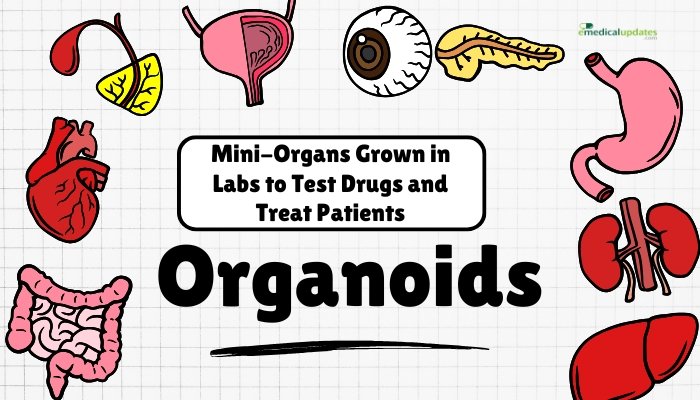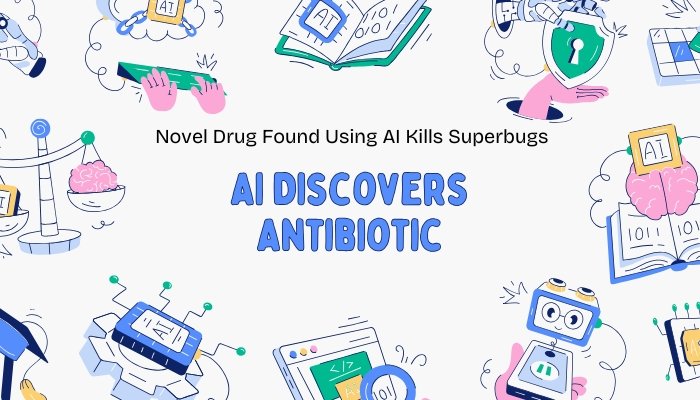Introduction
Across the globe, scientists are developing “mini-organs” known as organoids—three-dimensional clusters of cells that replicate key structural and functional aspects of real human organs. By mimicking organs like the brain, liver, kidneys, and intestines on a small scale, organoids help researchers study diseases, test drugs, and eventually guide personalized treatments without invasive procedures.
This technology has advanced dramatically in recent years, raising prospects for more accurate drug screening and tailored medicine. In this article, we explore how organoids are formed, why they matter for health and disease research, and the potential they hold for the future of medical science.
What Are Organoids?
Defining Mini-Organs
Organoids are three-dimensional tissue cultures derived from stem cells or organ-specific progenitor cells. When cultured under the right conditions—usually in specialized media and extracellular matrix gels—the cells self-organize, replicating structures and partial functionality of the organ from which they originate. For example, intestinal organoids can form small crypt-villus arrangements similar to the gut lining, while brain organoids show layers reminiscent of a developing cortex.
Key Features
- Self-Organization: Cells arrange themselves according to intrinsic developmental cues.
- Multi-Cellularity: Unlike standard 2D cell culture, organoids contain multiple cell types forming mini-tissues with complex interactions.
- Physiological Relevance: Organoids resemble the 3D architecture and gene expression patterns of real organs more closely than monolayer cultures.
How Are Organoids Made?
Starting with Stem Cells
Researchers typically use pluripotent stem cells—either embryonic stem cells (ESCs) or induced pluripotent stem cells (iPSCs)—capable of differentiating into many cell types. Alternatively, they can isolate organ-specific adult stem cells. Steps to create organoids:
- Stem Cell Culture: Pluripotent or organ-restricted stem cells are grown in a lab.
- Differentiation: Cells receive specific growth factors and signals prompting them to adopt a certain organ identity (e.g., gut, liver, kidney).
- 3D Scaffold: Cells are embedded in or layered on a matrix (like Matrigel) that simulates an extracellular environment.
- Self-Assembly: Over days or weeks, the cells form organized, three-dimensional structures reflecting some organ architecture.
The Role of Bioreactors and 3D Platforms
Advanced systems can include rotating bioreactors or microfluidic devices that provide nutrients, oxygen, and mechanical cues. These conditions facilitate better organoid growth:
- Microfluidics: Delivers fresh media, removes waste, and mimics blood flow.
- Rotational Cultures: Gently swirl organoids, enhancing uniform exposure to nutrients.
Why Are Organoids Important?
Drug Discovery and Testing
Pharmaceutical companies often rely on animal models and 2D cell lines, which may fail to predict human responses accurately. Organoids offer:
- Human-Relevant Models: Reflect human organ biology better than animal or single-layer cultures.
- Disease-Specific Tissue: Researchers can grow organoids from patient-derived cells to test how a tumor or diseased organ responds to candidate drugs.
- Personalized Screening: By comparing drug effects on a patient’s own organoid, physicians can identify the most effective therapy with fewer side effects.
Disease Modeling
From cystic fibrosis to neurodegenerative diseases, organoids help dissect disease mechanisms in a controlled environment:
- Genetic Fidelity: iPSC-derived organoids carry the same genetic mutations as the patient, enabling pathophysiological insights.
- Developmental Studies: Brain organoids reveal early developmental processes linked to autism or microcephaly, clarifying how disruptions arise.
Reducing Animal Use
Organoids can cut reliance on animal experiments, aligning with the push for more humane, cost-effective, and clinically relevant preclinical models.
Types of Organoids
Brain Organoids
Derived from pluripotent stem cells, brain organoids can form cortical layers, fluid-filled ventricles, and early neuronal circuits:
- Use Cases: Studying human brain development, certain neurological conditions (e.g., Zika virus impact, microcephaly), or screening neuroactive drugs.
- Limitations: Lack of vascularization restricts organoid size and complexity; advanced methods attempt to add blood vessel cells or transplanted organoids into rodent models.
Gut/Intestinal Organoids
Gut organoids can display crypt and villi structures, mucus production, and absorption patterns typical of the intestine:
- Clinical Relevance: Researchers use them to study inflammatory bowel disease, host-microbiome interactions, or drug absorption and toxicity.
- Personalized Approach: Patients with cystic fibrosis or other GI conditions might have biopsies used to create organoids, revealing personalized responses to therapies.
Liver Organoids
Given the liver’s vital roles in detoxification and metabolism, hepatic organoids are valuable for:
- Drug Toxicity Testing: Checking whether drug candidates cause liver injury.
- Regenerative Medicine: Potential future application in bridging therapies for liver failure or testing ex vivo gene therapies.
Kidney Organoids
Kidney organoids exhibit early nephron structures (glomeruli, proximal/distal tubules):
- Disease Modeling: Polycystic kidney disease or nephrotoxicity from certain drugs.
- Transplant Potential: Long-term dream is to scale up or refine organoids into fully functional transplantable tissues, though that remains far off.
Tumor Organoids
Cancer organoids replicate tumors’ 3D architecture and genetic makeup, enabling precise drug screening and personalized oncology approaches:
- Precision Medicine: Create a tumor organoid from a patient’s biopsy, test multiple chemotherapies or targeted agents, and identify the best response.
- Resistance Studies: Understanding how tumors adapt to or evade treatment within a realistic microenvironment.
Clinical and Industrial Applications
Personalized Medicine
- Predictive Testing: Before prescribing an expensive targeted therapy, doctors can see how a patient’s tumor organoid reacts, minimizing trial-and-error.
- Reducing Side Effects: Faster identification of tolerable and effective drug combos improves safety.
Regenerative Approaches
Some labs explore ways to grow organoid-derived tissues that might replace or repair damaged organs. For instance:
- Transplantation: Implanting small patches of healthy liver or intestinal tissue.
- Wound Healing: Using skin organoids or epithelial organoids for tissue repair.
Drug Discovery Pipeline
Pharma companies can integrate organoid-based assays early in development to:
- Filter Out Toxic Compounds before animal trials.
- Verify Human-Specific Efficacy in relevant disease models.
- Shorten Timelines and Lower R&D Costs by focusing on the most promising leads.
Challenges and Limitations
Vascularization and Complexity
Most organoids lack fully functional blood vessels, immune cells, or nerve supply, limiting growth beyond a few millimeters. They may not perfectly replicate the full-scale organ environment:
- Partial Function: While organoids approximate certain structures, they might not perform all physiological tasks.
- Ongoing Research: Scientists are adding endothelial cells, co-culturing multiple cell types, or implanting organoids into animal models to enhance maturity.
Standardization and Reproducibility
Various protocols, cell lines, and growth factors can yield different results or qualities. For widespread adoption, standard protocols and quality control measures are needed:
- Biological Variability: Donor-specific differences can affect organoid formation and function.
- Batch Consistency: Large-scale drug screening demands uniform organoids to ensure reliable data.
Ethical Considerations
- Brain Organoids: As they grow more complex, questions arise about potential consciousness or pain perception—though currently they remain far from any sense of sentience.
- Human Tissue Sourcing: Using patient-derived cells must follow strict informed consent, privacy, and data use guidelines.
Future Horizons
Next-Gen Systems
Beyond organoids, scientists look to combine organoids into “organs-on-chips,” microfluidic devices linking multiple mini-organs (e.g., liver-kidney-gut) to model systemic interactions. This multi-organ approach approximates a human “body-on-a-chip” for integrated drug testing.
Larger-Scale Organ Engineering
While fully functional bioengineered organs remain a distant goal, breakthroughs in vascularization, scaffolding, and 3D bioprinting might eventually yield transplantable organ-like constructs. For instance, decellularized organ scaffolds recellularized with patient cells or advanced 3D printing of organoid compartments.
Clinical Trials
More direct clinical validation is underway. For instance, clinicians might use organoid-based drug screening to guide real-time therapy decisions for cancer patients. Observational data from these “co-clinical” trials will clarify how well organoid predictions match actual patient outcomes.
Frequently Asked Questions
- Are organoids mini-working organs?
- They recapitulate key features but aren’t fully functional or full-sized replacements. They serve as models, not complete organ substitutes.
- Can organoids cure diseases now?
- Not directly. Currently, they’re primarily for research, drug screening, and personalized therapy guidance. Future regenerative medicine approaches might enable partial tissue replacement.
- How do organoids differ from 2D cell cultures?
- Organoids grow in three dimensions, containing multiple cell types and mimicking real tissue architecture, providing a more realistic model than flat cell monolayers.
- Are organoids ethical?
- They often come from patient or donor stem cells with consent. Brain organoids spark additional debates about consciousness, but at present, they lack the complexity for self-awareness.
- Where can I learn more about organoid research?
- Leading institutions like the Hubrecht Institute, MIT, or organ-on-a-chip consortia share updates. Peer-reviewed journals like Nature, Cell, or Science publish major breakthroughs.
Conclusion
Organoids represent a revolutionary stride in biomedical research, enabling scientists to study diseases and test potential cures in vitro using human-relevant, three-dimensional tissue models. By reflecting the complexity and cell diversity of real organs, organoids offer insights that traditional cell cultures or animal models often miss. As the technology matures, organoids are poised to transform drug discovery, refine personalized medicine strategies, and even pave the way for partial organ repair.
Despite challenges—like ensuring vascularization, standardizing protocols, and addressing ethical questions—investments in organoid research continue to rise. Companies and academic labs worldwide are harnessing these miniature organ systems to expedite safer, more effective treatments for a myriad of conditions, from cancer to neurodegenerative disorders. Ultimately, organoids showcase the power of harnessing nature’s self-organizing capacity, hinting at a future where disease modeling and patient care become far more targeted, efficient, and human-focused.
References
-
- Lancaster MA, Knoblich JA. (2014). “Generation of cerebral organoids from human pluripotent stem cells.” Nat Protoc.
-
- Huch M, et al. (2015). “Long-term culture of stem cell-derived organoids from multiple adult organs.” Nature.
-
- Clevers H. (2016). “Modeling Development and Disease with Organoids.” Cell.
-
- Li X, et al. (2019). “Organoids as a new model for cell biology.” J Cell Sci.
-
- Pauli C, et al. (2017). “Personalized in vitro and in vivo cancer models to guide precision medicine.” Cancer Discovery.







